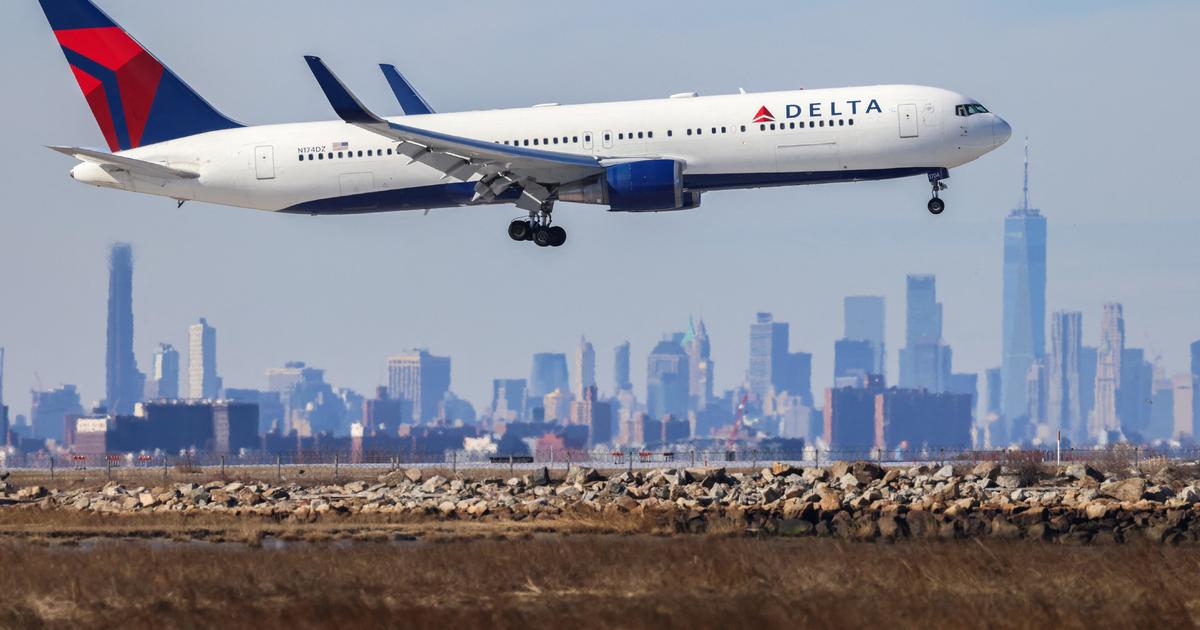Video: Air France Superjumbo Spins Commuter Jet Like A Top
NEW YORK (CBSNewYork) -- Call it a hit and spin.
How did a jumbo jet collide with a commuter plane at John F. Kennedy International Airport?
Video shows the giant Air France A380 Airbus clipping the smaller plane, tossing it around like a toy, reports CBS 2's Marcia Kramer.
Federal investigators are leaving no stone unturned as they probe the freak accident from Monday night. They'll listen to the black boxes and the air traffic control tapes, and hear words people in the airline industry hope they never hear:
Pilot: "Commerce 563 just hit us."
LISTEN: Raw Controller Audio of the Incident (via LiveATC.net)
Podcast
That radio transmission from the pilot to the tower was the first alert to air traffic controllers that something terrible had happened on the tarmac at JFK -- that the world's largest passenger plane collided with a smaller commuter plane.
According to the National Transportation Safety Board, which is leading the investigation, and the video, the 800-person capacity Air France mega plane was taxiing to its takeoff position when its left wing clipped the tail of a Comair 120-passenger CRJ 700 commuter plane that had just landed from Boston. The collision spun the smaller plane 90 degrees and heavily damaged both planes.
"This was not just two aircraft rubbing up against each other. This was a collision that had quite a bit of energy to it," Bill Voss, president of the Flight Safety Foundation, told 1010 WINS.
The big question for investigators is how did the planes collide on the ground. An audio recording of conversations between the JFK controller responsible for coordinating the movement of planes on the tarmac and the two aircraft indicates the Comair plane was trying to exit the taxiway but may have stopped short because of congestion on the ramp -- the area where planes park, Voss said.
"It was a dark and rainy night and I've been an air traffic controller in a busy facility and I've taxied as a pilot in those circumstances and all you really see is a sea of blinking lights it's difficult to discern exactly where aircraft have stopped," Voss said. "The combination of the congestion, possible distractions and the impediments to visibility probably all played a roll."
Aviation expert Norman Cousins told Kramer there is a design flaw in the Airbus. The end of its wings turn up, creating a blind spot. The Airbus pilot couldn't see the smaller plane, he said.
"Even if he opened the window on the pilot side and stuck his head out he couldn't get sharp angel to see behind him," Cousins said.
Other planes besides the A380 have similar upturned wings -- or winglets -- including the 727, 747, DC-11 and all the Airbus planes.
According to the NTSB there were 18 taxiway collisions nationwide involving 36 planes between 2005 and 2010. Cousins said the Federal Aviation Administration is partially to blame for not requiring cameras or fiber optics that allows pilots to see what's behind their wings.
The FAA is participating in the investigation, but a full report may not be ready for months. Cousins said the combined damaged to the planes could near $1 million. The agency confirmed none of the 62 passengers or four crew aboard the Comair jet were hurt in the collision but said it was clear the incident needed to be investigated.
"There is a clear understanding between pilots and air traffic controllers on the things to look out for when operating on a congested airport and an accident of this severity on ground control is certainly unusual," Voss said.
Does this change your opinion of flight safety? Are these superjumbo jets safe? Sound off in our comments section.



